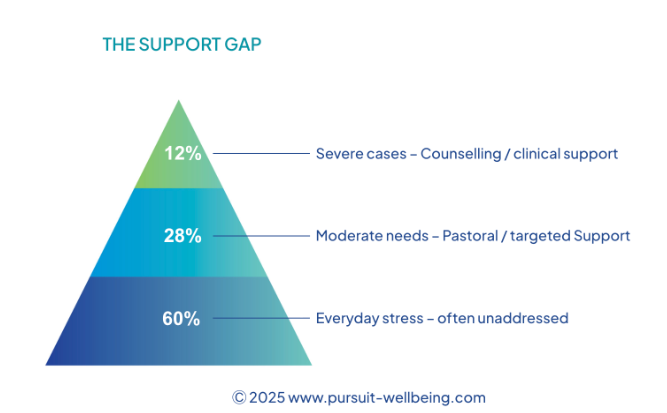As a school leader, you’re used to balancing a never-ending list of demands – responding to emails, handling behaviour, supporting staff, managing crises, attending meetings… and somehow still trying to focus on strategy and vision.
In all of this, staff wellbeing is likely high on your priority list. But here’s the uncomfortable truth:
Your team is looking to you not just for policies or guidance, but for permission.
Permission to rest. Permission to set boundaries. Permission to be human.
In short, they’re looking at how you model wellbeing in your own leadership practice.
Wellbeing isn’t just what you say, it’s what you show
As leaders, we often feel responsible for everyone else’s wellbeing. Checking in with struggling staff, absorbing emotional loads, staying late to “set the tone,” or pushing through exhaustion because we don’t want to let anyone down.
But when was the last time you prioritised your wellbeing?
When did you last take a lunch break, leave on time, or say “no” without guilt?
Leadership carries a unique emotional weight. Staff, students, families all rely on you. But trying to carry it all, all the time, leads to burnout. And whether we realise it or not, how we treat our own wellbeing sends a powerful message to everyone around us.
If you’re always working late, never taking breaks, or constantly putting yourself last… your team will assume that’s what’s expected.
Why your example matters
A school thrives when its leadership is calm, clear, and emotionally available. But that kind of leadership doesn’t come from running on empty.
True strength as a leader comes from being:
- Well-rested, so you can think strategically.
- Clear-headed, so you can make wise, balanced decisions.
- Emotionally resilient, so you can support others without depleting yourself.
And these things are only possible when you take care of yourself first – not last.
This isn’t selfish. It’s leadership.
Self-care doesn’t have to be time-consuming
We often picture “self-care” as spa days, yoga retreats, or hours we don’t have. But real, sustainable wellbeing can start small.
Here are three simple ways you can begin modelling wellbeing today:
1. Protect one small block of time just for you
Whether it’s 10 quiet minutes at lunch, a walk before school, or finishing work at a set time, create one non-negotiable window in your day that’s just for you. Treat it with the same importance as any meeting.
2. Model healthy boundaries
Try leaving on time at least once a week. Say no to a meeting that doesn’t need you. Let staff see that protecting your time is not only acceptable, it’s encouraged.
3. Notice your stress signals
Do you clench your jaw? Feel constantly irritable? Struggle to sleep? Recognising your early warning signs is the first step toward managing stress before it becomes burnout.
Even just acknowledging your stress out loud – “I’m feeling stretched today, so I’m taking a short break” – gives permission for others to do the same.
The ripple effect of self-leadership
When you prioritise your own wellbeing, it doesn’t just help you, it shapes your whole school culture.
You:
- Build emotional resilience across your staff team
- Improve your own clarity, patience, and decision-making
- Create a working environment where balance is normalised, not exceptional
- Set the tone for healthier, more sustainable leadership
And over time, this models something powerful for your students too, that adults can lead with compassion, clarity, and care for themselves and others.
You don’t have to do it alone
Leadership can be isolating, but it doesn’t have to be.
Connecting with fellow school leaders, sharing ideas, and being honest about what’s hard can provide strength, strategy, and solidarity. Find or build your network. Prioritise the conversations that support you, not just your staff.
Reflection: What’s one small way you can lead by example today?
Think about something small, realistic, and meaningful – a five-minute walk, finishing on time, asking for help, saying no to something that can wait.
Whatever it is, commit to it and know that it’s not just for you.
It’s for your team. Your students. Your future self.
That’s leadership.




